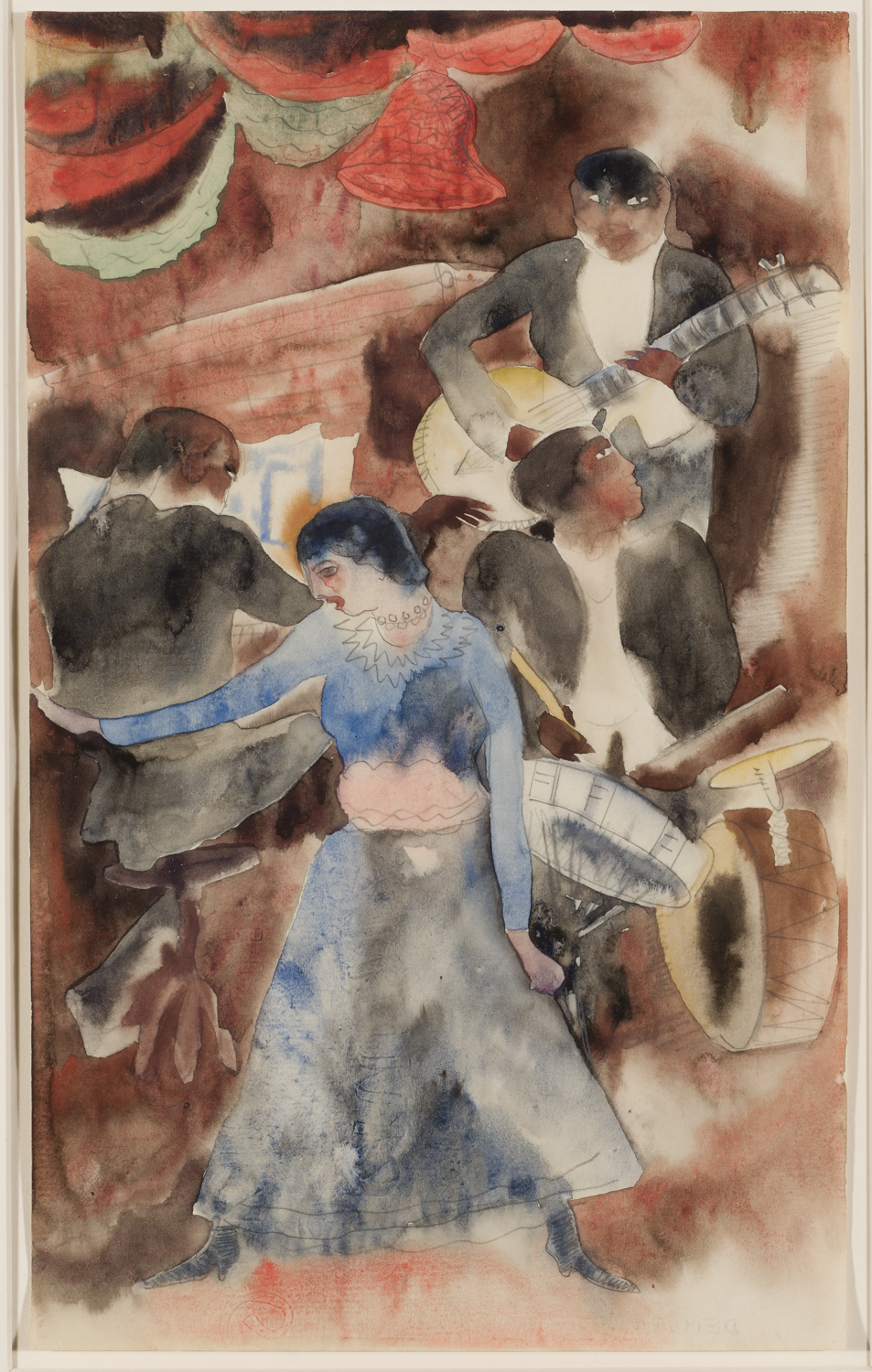Charles Demuth
Charles Demuth was a renowned watercolorist and oil painter who distilled the lessons of European modernism into a uniquely American style. Born to a well-to-do family in Lancaster, Pennsylvania, Demuth had early aspirations in art, taking lessons as a child and later enrolling at the Drexel Institute of Technology in Philadelphia. Demuth demonstrated great potential, and his teachers encouraged him to transfer to The Pennsylvania Academy of the Fine Arts where he studied with Thomas Anshutz and William Merrit Chase. He supplemented his education with trips to Paris in 1907 and again from 1912-14, where he joined a circle of American expatriate artists and intellectuals such as Marsden Hartley. When he returned to the United States, Demuth moved between New York, Lancaster, and various New England seaside resorts.
Demuth embraced modernism when he returned to the states, working primarily in watercolors during the early twentieth century. He was influenced by the work of John Marin, and began to use looser washes of color in his early compositions of floral and fruit still life arrangements. Demuth had his first solo exhibition in New York in 1914 at Charles Daniel’s gallery, where many other American modernists were promoted. Demuth was positioned among the rising bohemian artistic circles of both Daniel and Alfred Stieglitz.
During the 1910s, New York experienced a burgeoning nightlife culture, which included vaudeville, circus acts, and vibrant nightclubs and cafes showcasing the emergence of jazz music. Demuth was captivated by the rising bohemian subculture, and frequented nightclubs such as Marshall’s, a Black-owned establishment in the basement of a hotel of the same name on West 53rd Street under the Sixth Avenue elevated train. Marshall’s was a major cultural and intellectual center of African American life during the early twentieth century. It attracted intellectuals, artists, musicians, composers, writers, and vaudevillians, and featured jazz performances by Florence Dunbar and Bill Bailey. The performances and events at Marshall’s helped establish the foundation for the Harlem Renaissance in the years following its closure in 1913.
Demuth frequented Marshall’s, and it became the inspiration for a series of watercolors depicting musicians and dancers completed in the late 1910s, including the present work, Negro Dancer Girl. The tightly composed composition features a typical performance seen in the bars and nightclubs of New York. A young woman dances at the center, accompanied by a trio of jazz musicians in the background. The watercolor is executed with rapid, loose brushstrokes that mirror the energetic and rhythmic style of music being played. Characteristic of his style, the figures and instruments are outlined in pencil and filled with richly saturated and layered washes of color.
Demuth completed similar works, including Negro Jazz Band (1916, location unknown), and two versions of a work titled At Marshall’s (1915, location unknown, and 1917, The Barnes Foundation). Demuth was one of the few artists to depict this bohemian subculture of the late 1910’s in New York, making this body of work rare and important. By the 1920s, Demuth turned to oil painting and developed a new style of painting known as Precisionism along with Charles Sheeler, Elsie Driggs, Ralston Crawford, and Louis Lozowick. Demuth painted American cityscapes in a reduced, cubistic style of painting using sharp contrasts and lines, a departure from the painterly watercolors of his early career.
Charles Demuth
Negro Dancer Girl, 1916
Watercolor and pencil on paper
13″ x 7 3/4″
Signed on the verso
Provenance
The artist
(Possibly) Daniel Gallery, New York
Robert Laurent, Brooklyn Heights, New York
Kennedy Galleries, Inc., New York
Collection of Dr. Irwin Goldstein, New Jersey
Christie’s, New York, November 29, 2007, lot 29, (estimate $60,000-$80,000, sold for $185,000)
Mary Anne and Eugene A. Gargaro, Jr. Collection, Grosse Pointe Shores, Michigan, acquired from the above

